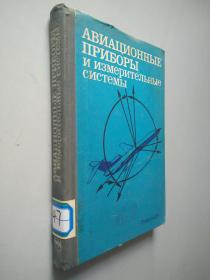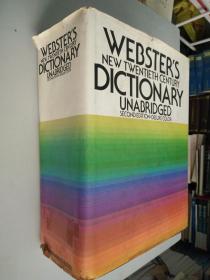
服务计算技术丛书:SOA概念、技术与设计(英文版)
¥ 10 八五品
仅1件
河北衡水
认证卖家担保交易快速发货售后保障
作者[美]Thomas Erl 著
出版社科学出版社
出版时间2012-03
版次1
装帧平装
货号新9-1-6
上书时间2024-11-22
- 在售商品 暂无
- 平均发货时间 6小时
- 好评率 暂无
- 店主推荐
- 最新上架
商品详情
- 品相描述:八五品
图书标准信息
- 作者 [美]Thomas Erl 著
- 出版社 科学出版社
- 出版时间 2012-03
- 版次 1
- ISBN 9787030336422
- 定价 115.00元
- 装帧 平装
- 开本 16开
- 纸张 胶版纸
- 页数 784页
- 字数 831千字
- 正文语种 简体中文
- 丛书 服务计算技术丛书
- 【内容简介】
-
《服务计算技术丛书:SOA概念、技术与设计(英文版)》是一本关于面向服务架构(SOA)、WebService和面向服务技术的综合教程,系统介绍了SOA的概念、技术和设计。书中用125个研究实例和300多幅插图介绍了建立SOA平台所需要的最重要的几个方面:目标、障碍、概念、技术、标准、交付策略、分析和设计的流程等。《服务计算技术丛书:SOA概念、技术与设计(英文版)》旨在帮助读者充分理解现代SOA的组成,以及成功实现SOA的步骤。全书通俗易懂,用比喻的方式描述复杂的概念,便于读者理解。
《服务计算技术丛书:SOA概念、技术与设计(英文版)》可供SOA领域的软件架构师、高级软件工程师、分析师、应用科研人员等参考学习。 - 【作者简介】
-
Thomas Erl is the world's top-selling SOA author,the Series Editor of the Prentice Hall Service-Oriented Computing Series from Thomas Erl,and Editor of The SOA Magazine.
With over 80,000 copies in print world-wide,his books have become international bestsellers and have been formally endorsed by senior members of major software organizations,such as IBM,Microsoft,Oracle,BEA,Sun,Intel,SAP,and HP.His most recent titles are SOA:Principles of Service Design and SOADesign Patterns(www.soabooks.com).
Thomas is also the founder of SOA Systems Inc.(www.soasystems.com),a company specializing in SOA training and strategic consulting services with a vendor-agnostic focus.Through his work with standards organizations and independent research efforts,Thomas has made significant contributions to the SOA industry,most notably in the areas of service-orientation and SOA methodology.
Thomas is a speaker and instructor for private and public events,and has delivered many workshops and keynote speeches.He has also developed an industry-recognized SOAtraining and certification program.For more information,see www.soaschool.com and www.soatraining.com.
Papers and articles written by Thomas have been published in numerous industry trade magazines and Web sites,and he has delivered Webcasts and interviews for many publications,including the Wall Street Journal.
For more information,visit www.thomaserl.com. - 【目录】
-
Preface
Chapter1Introduction
1.1Whythisbookisimportant
1.1.1ThefalseSOA
1.1.2TheidealSOA
1.1.3TherealSOA
1.2Objectivesofthisbook
1.2.1UnderstandingSOA,service-orientation,andWebservices
1.2.2LearninghowtobuildSOAwithWebservices
1.3Whothisbookisfor
1.4Whatthisbookdoesnotcover
1.5Howthisbookisorganized
1.5.1PartⅠ:SOAandWebServicesFundamentals
1.5.2PartⅡ:SOAandWS-*Extensions
1.5.3PartⅢ:SOAandService-Orientation
1.5.4PartⅣ:BuildingSOA(PlanningandAnalysis)
1.5.5PartⅤ:BuildingSOA(TechnologyandDesign)
1.5.6Conventions
1.6Additionalinformation
1.6.1TheXML&WebServicesIntegrationFramework(XWIF)
1.6.2www.serviceoriented.ws
1.6.3ContacttheAuthor
Chapter2CaseStudies
2.1Howcasestudiesareused
2.1.1Stylecharacteristics
2.1.2Relationshiptoabstractcontent
2.1.3Codesamples
2.2Case#1background:RailCoLtd.
2.2.1History
2.2.2Technicalinfrastructure
2.2.3Automationsolutions
2.2.4Businessgoalsandobstacles
2.3Case#2background:TransitLineSystemsInc
2.3.1History
2.3.2Technicalinfrastructure
2.3.3Automationsolutions
2.3.4Businessgoalsandobstacles
PartⅠSOAandWebServicesFundamentals
Chapter3IntroducingSOA
3.1FundamentalSOA
3.1.1Aservice-orientedanalogy
3.1.2Howservicesencapsulatelogic
3.1.3Howservicesrelate
3.1.4Howservicescommunicate
3.1.5Howservicesaredesigned
3.1.6Howservicesarebuilt
3.1.7PrimitiveSOA
3.2CommoncharacteristicsofcontemporarySOA
3.2.1ContemporarySOAisatthecoreoftheservice-orientedcomputingplatform
3.2.2ContemporarySOAincreasesqualityofservice
3.2.3ContemporarySOAisfundamentallyautonomous
3.2.4ContemporarySOAisbasedonopenstandards
3.2.5ContemporarySOAsupportsvendordiversity
3.2.6ContemporarySOApromotesdiscovery
3.2.7ContemporarySOAfostersintrinsicinteroperability
3.2.8ContemporarySOApromotesfederation
3.2.9ContemporarySOApromotesarchitecturalcomposability
3.2.10ContemporarySOAfostersinherentreusability
3.2.11ContemporarySOAemphasizesextensibility
3.2.12ContemporarySOAsupportsaservice-orientedbusinessmodelingparadigm
3.2.13ContemporarySOAimplementslayersofabstraction
3.2.14ContemporarySOApromotesloosecouplingthroughouttheenterprise
3.2.15ContemporarySOApromotesorganizationalagility
3.2.16ContemporarySOAisabuildingblock
3.2.17ContemporarySOAisanevolution
3.2.18ContemporarySOAisstillmaturing
3.2.19ContemporarySOAisanachievableideal
3.2.20DefiningSOA
3.2.21Separatingconcretecharacteristics
3.3CommonmisperceptionsaboutSOA
3.3.1"AnapplicationthatusesWebservicesisservice-oriented."
3.3.2"SOAisjustamarketingtermusedtore-brandWebservices."
3.3.3"SOAisjustamarketingtermusedtore-branddistributedcomputingwithWebservices."
3.3.4"SOAsimplifiesdistributedcomputing."
3.3.5"AnapplicationwithWebservicesthatusesWS-*extensionsisservice-oriented."
3.3.6"IfyouunderstandWebservicesyouwon?thaveaproblembuildingSOA."
3.3.7"OnceyougoSOA,everythingbecomesinteroperable."
3.4CommontangiblebenefitsofSOA
3.4.1Improvedintegration(andintrinsicinteroperability)
3.4.2Inherentreuse
3.4.3Streamlinedarchitecturesandsolutions
3.4.4Leveragingthelegacyinvestment
3.4.5EstablishingstandardizedXMLdatarepresentation
3.4.6Focusedinvestmentoncommunicationsinfrastructure
3.4.7"Best-of-breed"alternatives
3.4.8Organizationalagility
3.5CommonpitfallsofadoptingSOA
3.5.1Buildingservice-orientedarchitecturesliketraditionaldistributedarchitectures
3.5.2NotstandardizingSOA
3.5.3Notcreatingatransitionplan
3.5.4NotstartingwithanXMLfoundationarchitecture
3.5.5NotunderstandingSOAperformancerequirements
3.5.6NotunderstandingWebservicessecurity
3.5.7Notkeepingintouchwithproductplatformsandstandardsdevelopment
Chapter4TheEvolutionofSOA
4.1AnSOAtimeline(fromXMLtoWebservicestoSOA)
4.1.1XML:abriefhistory
4.1.2Webservices:abriefhistory
4.1.3SOA:abriefhistory
4.1.4HowSOAisre-shapingXMLandWebservices
4.2ThecontinuingevolutionofSOA(standardsorganizationsandcontributingvendors)
4.2.1"Standards"vs"Specifications"vs"Extensions"
4.2.2StandardsorganizationsthatcontributetoSOA
4.2.3MajorvendorsthatcontributetoSOA
4.3TherootsofSOA(comparingSOAtopastarchitectures)
4.3.1Whatisarchitecture?
4.3.2SOAvsclient-serverarchitecture
4.3.3SOAvsdistributedInternetarchitecture
4.3.4SOAvshybridWebservicearchitecture
4.3.5Service-orientationandobject-orientation(PartⅠ)
Chapter5WebServicesandPrimitiveSOA
5.1TheWebservicesframework
5.2Services(asWebservices)
5.2.1Serviceroles
5.2.2Servicemodels
5.3Servicedescriptions(withWSDL)
5.3.1Serviceendpointsandservicedescriptions
5.3.2Abstractdescription
5.3.3Concretedescription
5.3.4Metadataandservicecontracts
5.3.5Semanticdescriptions
5.3.6Servicedescriptionadvertisementanddiscovery
5.4Messaging(withSOAP)
5.4.1Messages
5.4.2Nodes
5.4.3Messagepaths
PartⅡSOAandWS-*Extensions
Whatis"WS-*"?
Chapter6WebServicesandContemporarySOA(PartⅠ:ActivityManagementandComposition)
6.1Messageexchangepatterns
6.1.1PrimitiveMEPs
6.1.2MEPsandSOAP
6.1.3MEPsandWSDL
6.1.4MEPsandSOA
6.2Serviceactivity
6.2.1Primitiveandcomplexserviceactivities
6.2.2ServiceactivitiesandSOA
6.3Coordination
6.3.1Coordinatorcomposition
6.3.2Coordinationtypesandcoordinationprotocols
6.3.3Coordinationcontextsandcoordinationparticipants
6.3.5Theactivationandregistrationprocess
6.3.5Thecompletionprocess
6.3.6CoordinationandSOA
6.4Atomictransactions
6.4.1ACIDtransactions
6.4.2Atomictransactionprotocols
6.4.3Theatomictransactioncoordinator
6.4.4Theatomictransactionprocess
6.4.5AtomictransactionsandSOA
6.5Businessactivities
6.5.1Businessactivityprotocols
6.5.2Thebusinessactivitycoordinator
6.5.3Businessactivitystates
6.5.4Businessactivitiesandatomictransactions
6.5.5BusinessactivitiesandSOA
6.6Orchestration
6.6.1Businessprotocolsandprocessdefinition
6.6.2Processservicesandpartnerservices
6.6.3Basicactivitiesandstructuredactivities
6.6.4Sequences,flows,andlinks
6.6.5Orchestrationsandactivities
6.6.6Orchestrationandcoordination
6.6.7OrchestrationandSOA
6.7Choreography
6.7.1Collaboration
6.7.2Rolesandparticipants
6.7.3Relationshipsandchannels
6.7.4Interactionsandworkunits
6.7.5Reusability,composability,andmodularity
6.7.6Orchestrationsandchoreographies
6.7.7ChoreographyandSOA
Chapter7WebServicesandContemporarySOA(PartⅡ:AdvancedMessaging,Metadata,andSecurity)
7.1Addressing
7.1.1Endpointreferences
7.1.2Messageinformationheaders
7.1.3Addressingandtransportprotocolindependence
7.1.4AddressingandSOA
7.2Reliablemessaging
7.2.1RMSource,RMDestination,ApplicationSource,andApplicationDestination
7.2.2Sequences
7.2.3Acknowledgements
7.2.4Deliveryassurances
7.2.5Reliablemessagingandaddressing
7.2.6ReliablemessagingandSOA
7.3Correlation
7.3.1Correlationinabstract
7.3.2CorrelationinMEPsandactivities
7.3.3Correlationincoordination
7.3.4Correlationinorchestration
7.3.5Correlationinaddressing
7.3.6Correlationinreliablemessaging
7.3.7CorrelationandSOA
7.4Policies
7.4.1TheWS-Policyframework
7.4.2Policyassertionsandpolicyalternatives
7.4.3Policyassertiontypesandpolicyvocabularies
7.4.4Policysubjectsandpolicyscopes
7.4.5Policyexpressionsandpolicyattachments
7.4.6Whatyoureallyneedtoknow
7.4.7Policiesincoordination
7.4.8Policiesinorchestrationandchoreography
7.4.9Policiesinreliablemessaging
7.4.10PoliciesandSOA
7.5Metadataexchange
7.5.1TheWS-MetadataExchangespecification
7.5.2GetMetadatarequestandresponsemessages
7.5.3Getrequestandresponsemessages
7.5.4Selectiveretrievalofmetadata
7.5.5Metadataexchangeandservicedescriptiondiscovery
7.5.6Metadataexchangeandversioncontrol
7.5.7MetadataexchangeandSOA
7.6Security
7.6.1Identification,authentication,andauthorization
7.6.2Singlesign-on
7.6.3Confidentialityandintegrity
7.6.4Transport-levelsecurityandmessage-levelsecurity
7.6.5Encryptionanddigitalsignatures
7.6.6SecurityandSOA
7.7Notificationandeventing
7.7.1Publish-and-subscribeinabstract
7.7.2Oneconcept,twospecifications
7.7.3TheWS-NotificationFramework
7.7.4TheWS-Eventingspecification
7.7.5WS-NotificationandWS-Eventing
7.7.6Notification,eventing,andSOA
PartⅢSOAandService-Orientation
Chapter8PrinciplesofService-Orientation
8.1Service-orientationandtheenterprise
8.2Anatomyofaservice-orientedarchitecture
8.2.1LogicalcomponentsoftheWebservicesframework
8.2.2Logicalcomponentsofautomationlogic
8.2.3ComponentsofanSOA
8.2.4HowcomponentsinanSOAinter-relate
8.3Commonprinciplesofservice-orientation
8.3.1Servicesarereusable
8.3.2Servicesshareaformalcontract
8.3.3Servicesarelooselycoupled
8.3.4Servicesabstractunderlyinglogic
8.3.5Servicesarecomposable
8.3.6Servicesareautonomous
8.3.7Servicesarestateless
8.3.8Servicesarediscoverable
8.4Howservice-orientationprinciplesinter-relate
8.4.1Servicereusability
8.4.2Servicecontract
8.4.3Serviceloosecoupling
8.4.4Serviceabstraction
8.4.5Servicecomposability
8.4.6Serviceautonomy
8.4.7Servicestatelessness
8.4.8Servicediscoverability
8.5Service-orientationandobject-orientation(PartⅡ)
8.6NativeWebservicesupportforservice-orientationprinciples
Chapter9ServiceLayers
9.1Service-orientationandcontemporarySOA
9.1.1MappingtheoriginsandsupportingsourcesofconcreteSOAcharacteristics
9.1.2UnsupportedSOAcharacteristics
9.2Servicelayerabstraction
9.2.1Problemssolvedbylayeringservices
9.3Applicationservicelayer
9.4Businessservicelayer
9.5Orchestrationservicelayer
9.6Agnosticservices
9.7Servicelayerconfigurationscenarios
9.7.1Scenario#1:Hybridapplicationservicesonly
9.7.2Scenario#2:Hybridandutilityapplicationservices
9.7.3Scenario#3:Task-centricbusinessservicesandutilityapplicationservices
9.7.4Scenario#4:Task-centricbusinessservices,entity-centricbusinessservices,andutilityapplicationservices
9.7.5Scenario#5:Processservices,hybridapplicationservices,andutilityapplicationservices
9.7.6Scenario#6:Processservices,task-centricbusinessservices,andutilityapplicationservices
9.7.7Scenario#7:Processservices,task-centricbusinessservices,entity-centricbusinessservices,andutilityapplicationservices
9.7.8Scenario#8:Processservices,entity-centricbusinessservices,andutilityapplicationservices
PartⅣBuildingSOA(PlanningandAnalysis)
Chapter10SOADeliveryStrategies
10.1SOAdeliverylifecyclephases
10.1.1BasicphasesoftheSOAdeliverylifecycle
10.1.2Service-orientedanalysis
10.1.3Service-orienteddesign
10.1.4Servicedevelopment
10.1.5Servicetesting
10.1.6Servicedeployment
10.1.7Serviceadministration
10.1.8SOAdeliverystrategies
10.2Thetop-downstrategy
10.2.1Process
10.2.2Prosandcons
10.3Thebottom-upstrategy
10.3.1Process
10.3.2Prosandcons
10.4Theagilestrategy
10.4.1Process
10.4.2Prosandcons
Chapter11Service-OrientedAnalysis(PartⅠ:Introduction)
11.1Introductiontoservice-orientedanalysis
11.1.1Objectivesofservice-orientedanalysis
11.1.2Theservice-orientedanalysisprocess
11.2Benefitsofabusiness-centricSOA
11.2.1Businessservicesbuildagilityintobusinessmodels
11.2.2Businessservicesprepareaprocessfororchestration
11.2.3Businessservicesenablereuse
11.2.4Onlybusinessservicescanrealizetheservice-orientedenterprise
11.3Derivingbusinessservices
11.3.1Sourcesfromwhichbusinessservicescanbederived
11.3.2Typesofderivedbusinessservices
11.3.3Businessservicesandorchestration
Chapter12Service-OrientedAnalysis(PartⅡ:ServiceModeling)
12.1Servicemodeling(astep-by-stepprocess)
12.1.1"Services"versus"ServiceCandidates"
12.1.2Processdescription
12.2Servicemodelingguidelines
12.2.1Takeintoaccountpotentialcross-processreusabilityoflogicbeingencapsulated(task-centricbusinessservicecandidates)
12.2.2Considerpotentialintra-processreusabilityoflogicbeingencapsulated(task-centricbusinessservicecandidates)
12.2.3Factorinprocess-relateddependencies(task-centricbusinessservicecandidates)
12.2.4Modelforcross-applicationreuse(applicationservicecandidates)
12.2.5Speculateonfurtherdecompositionrequirements
12.2.6Identifylogicalunitsofworkwithexplicitboundaries
12.2.7Preventlogicboundarycreep
12.2.8Emulateprocessserviceswhennotusingorchestration(task-centricbusinessservicecandidates)
12.2.9Targetabalancedmodel
12.2.10Classifyservicemodelinglogic
12.2.11Allocateappropriatemodelingresources
12.2.12Createandpublishbusinessservicemodelingstandards
12.3Classifyingservicemodellogic
12.3.1TheSOEmodel
12.3.2Theenterprisebusinessmodel
12.3.3"BuildingBlocks"versus"ServiceModels"
12.3.4Basicmodelingbuildingblocks
12.4Contrastingservicemodelingapproaches(anexample)
PartⅤBuildingSOA(TechnologyandDesign)
Chapter13Service-OrientedDesign(PartⅠ:Introduction)
13.1Introductiontoservice-orienteddesign
13.1.1Objectivesofservice-orienteddesign
13.1.2"Designstandards"versus"Industrystandards"
13.1.3Theservice-orienteddesignprocess
13.1.4Prerequisites
13.2WSDL-relatedXMLSchemalanguagebasics
13.2.1Theschemaelement
13.2.2Theelementelement
13.2.3ThecomplexTypeandsimpleTypeelements
13.2.4Theimportandincludeelements
13.2.5Otherimportantelements
13.3WSDLlanguagebasics
13.3.1Thedefinitionselement
13.3.2Thetypeselement
13.3.3Themessageandpartelements
13.3.4TheportType,interface,andoperationelements
13.3.5Theinputandoutputelements(whenusedwithoperation)
13.3.6Thebindingelement
13.3.7Theinputandoutputelements(whenusedwithbinding)
13.3.8Theservice,port,andendpointelements
13.3.9Theimportelement
13.3.10Thedocumentationelement
13.4SOAPlanguagebasics
13.4.1TheEnvelopeelement
13.4.2TheHeaderelement
13.4.3TheBodyelement
13.4.4TheFaultelement
13.5Serviceinterfacedesigntools
13.5.1Auto-generation
13.5.2Designtools
13.5.3Handcoding
Chapter14Service-OrientedDesign(PartⅡ:SOACompositionGuidelines)
14.1StepstocomposingSOA
14.1.1Step1:Chooseservicelayers
14.1.2Step2:Positioncorestandards
14.1.3Step3:ChooseSOAextensions
14.2Considerationsforchoosingservicelayers
14.3ConsiderationsforpositioningcoreSOAstandards
14.3.1IndustrystandardsandSOA
14.3.2XMLandSOA
14.3.3TheWS-IBasicProfile
14.3.4WSDLandSOA
14.3.5XMLSchemaandSOA
14.3.6SOAPandSOA
14.3.7NamespacesandSOA
14.3.8UDDIandSOA
14.4ConsiderationsforchoosingSOAextensions
14.4.1ChoosingSOAcharacteristics
14.4.2ChoosingWS-*specifications
14.4.3WS-BPELandSOA
Chapter15Service-OrientedDesign(PartⅢ:ServiceDesign)
15.1Servicedesignoverview
15.1.1Designstandards
15.1.2Abouttheprocessdescriptions
15.1.3Prerequisites
15.2Entity-centricbusinessservicedesign(astep-by-stepprocess)
15.2.1Processdescription
15.3Applicationservicedesign(astep-by-stepprocess)
15.3.1Processdescription
15.4Task-centricbusinessservicedesign(astep-by-stepprocess)
15.4.1Processdescription
15.5Servicedesignguidelines
15.5.1Applynamingstandards
15.5.2Applyasuitablelevelofinterfacegranularity
15.5.3Designserviceoperationstobeinherentlyextensible
15.5.4Identifyknownandpotentialservicerequestors
15.5.5ConsiderusingmodularWSDLdocuments
15.5.6Usenamespacescarefully
15.5.7UsetheSOAPdocumentandliteralattributevalues
15.5.8UseWS-IProfilesevenifWS-Icomplianceisn'trequired
15.5.9Documentserviceswithmetadata
Chapter16Service-OrientedDesign(PartⅣ:BusinessProcessDesign)
16.1WS-BPELlanguagebasics
16.1.1AbriefhistoryofBPEL4WSandWS-BPEL
16.1.2Prerequisites
16.1.3Theprocesselement
16.1.4ThepartnerLinksandpartnerLinkelements
16.1.5ThepartnerLinkTypeelement
16.1.6Thevariableselement
16.1.7ThegetVariablePropertyandgetVariableDatafunctions
16.1.8Thesequenceelement
16.1.9Theinvokeelement
16.1.10Thereceiveelement
16.1.11Thereplyelement
16.1.12Theswitch,case,andotherwiseelements
16.1.13Theassign,copy,from,andtoelements
16.1.14faultHandlers,catch,andcatchAllelements
16.1.15OtherWS-BPELelements
16.2WS-Coordinationoverview
16.2.1TheCoordinationContextelement
16.2.2TheIdentifierandExpireselements
16.2.3TheCoordinationTypeelement
16.2.4TheRegistrationServiceelement
16.2.5DesignatingtheWS-BusinessActivitycoordinationtype
16.2.6DesignatingtheWS-AtomicTransactioncoordinationtype
16.3Service-orientedbusinessprocessdesign(astep-by-stepprocess)
16.3.1Processdescription
Chapter17FundamentalWS-*Extensions
YoumustUnderstandthis
17.1WS-Addressinglanguagebasics
17.1.1TheEndpointReferenceelement
17.1.2Messageinformationheaderelements
17.1.3WS-Addressingreusability
17.2WS-ReliableMessaginglanguagebasics
17.2.1TheSequence,MessageNumber,andLastMessageelements
17.2.2TheSequenceAcknowledgementandAcknowledgementRangeelements
17.2.3TheNackelement
17.2.4TheAckRequestedelement
17.2.5OtherWS-ReliableMessagingelements
17.3WS-Policylanguagebasics
17.3.1ThePolicyelementandcommonpolicyassertions
17.3.2TheExactlyOneelement
17.3.3TheAllelement
17.3.4TheUsageattribute
17.3.5ThePreferenceattribute
17.3.6ThePolicyReferenceelement
17.3.7ThePolicyURIsattribute
17.3.8ThePolicyAttachmentelement
17.3.9Additionaltypesofpolicyassertions
17.4WS-MetadataExchangelanguagebasics
17.4.1TheGetMetadataelement
17.4.2TheDialectelement
17.4.3TheIdentifierelement
17.4.4TheMetadata,MetadataSection,andMetadataReferenceelements
17.4.5TheGetmessage
17.5WS-Securitylanguagebasics
17.5.1TheSecurityelement(WS-Security)
17.5.2TheUsernameToken,Username,andPasswordelements(WS-Security)
17.5.3TheBinarySecurityTokenelement(WS-Security)
17.5.4TheSecurityTokenReferenceelement(WS-Security)
17.5.5ComposingSecurityelementcontents(WS-Security)
17.5.6TheEncryptedDataelement(XML-Encryption)
17.5.7TheCipherData,CipherValue,andCipherReferenceelements(XML-Encryption)
17.5.8XML-Signatureelements
Chapter18SOAPlatforms
18.1SOAplatformbasics
18.1.1Basicplatformbuildingblocks
18.1.2CommonSOAplatformlayers
18.1.3RelationshipbetweenSOAlayersandtechnologies
18.1.4Fundamentalservicetechnologyarchitecture
18.1.5Vendorplatforms
18.2SOAsupportinJ2EE
18.2.1Platformoverview
18.2.2PrimitiveSOAsupport
18.2.3Supportforservice-orientationprinciples
18.2.4ContemporarySOAsupport
18.3SOAsupportin.NET
18.3.1Platformoverview
18.3.2PrimitiveSOAsupport
18.3.3Supportforservice-orientationprinciples
18.3.4ContemporarySOAsupport
18.4Integrationconsiderations
AppendixACaseStudies:Conclusion
A.1RailCoLtd
A.2TransitLineSystemsInc
A.3TheOasisCarWash
AppendixBServiceModelsReference
Glossary
AbouttheAuthor
AboutthePhotographs
Index
点击展开
点击收起
— 没有更多了 —






















以下为对购买帮助不大的评价